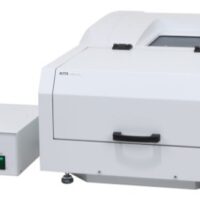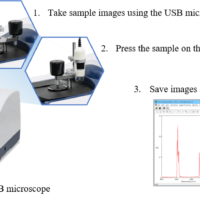Introduction
Attenuated total reflectance (ATR) method measures the infrared spectrum of the sample surface depth of 1 to 2 µm when sample and ATR prism are in close contact. Depending on the refractive index of prism and sample, the depth of light penetration into the sample, the measured spectra may differ. In addition, the measurement wavenumber range and durability vary depending on the prism material. The features of each prisms are shown below.
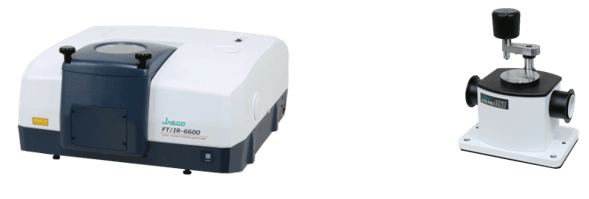
FT/IR-4600 FTIR spectrometer (left) and ATR PRO ONE ATR accessory (right)
Features of each prism
| Prism | RI (n1) | Penetration Depth dp*1 (1000cm-1) |
RI of Sample (n2)*2 for Total Reflection |
Measurement Limit in Low Wavenumber*3 Range |
|---|---|---|---|---|
| ZnSe | 2.4 | Approx. 2.0 μm | 1.7 or less | ~500 cm-1 |
| Diamond | 2.4 | Approx. 2.0 μm | 1.7 or less | ~350 cm-1 *4 |
| Ge | 4.0 | Approx. 0.7 μm | 2.8 or less | ~550 cm-1 |
| Prism | Feature of Prism |
Suitable Sample | Non-Suitable Sample | Notes |
|---|---|---|---|---|
| ZnSe | Good throughput |
General organic substance |
Hard powder, acidalkaline, high RI sample |
In case of hard powder or hubbly sample, diamond is recommended |
| Diamond | Intensity, durability, measurement |
Hard powder, General organic substance |
High RI sample | Poor S/N ratio in the region around 2000 cm-1, due to internal absorption |
| Ge | Analysis for high RI sample |
Sample including carbon | Hard powder, acidalkaline | Weak absorption due to small depth of penetration |
![]()
*3 Case of measurement using ATR PRO ONE and standard FTIR.
*4 If the measurement is needed in the wavenumber range below 350 cm-1, please contact local JASCO distributor.
Experimental
Example: Diamond is suitable (Sample: Toluene)
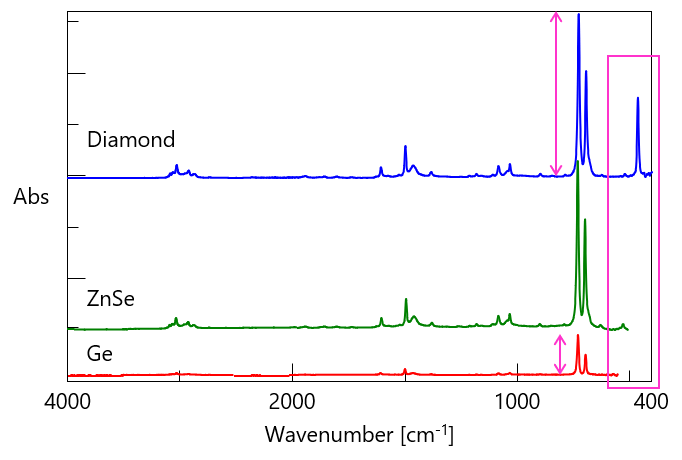
Spectra measured with diamond and ZnSe ATR have higher peak intensities than measured with Ge ATR.
Measurements with diamond ATR can be extended down to the low wavenumber side.
Example: Ge is suitable (Sample: Carbon-containing rubber)
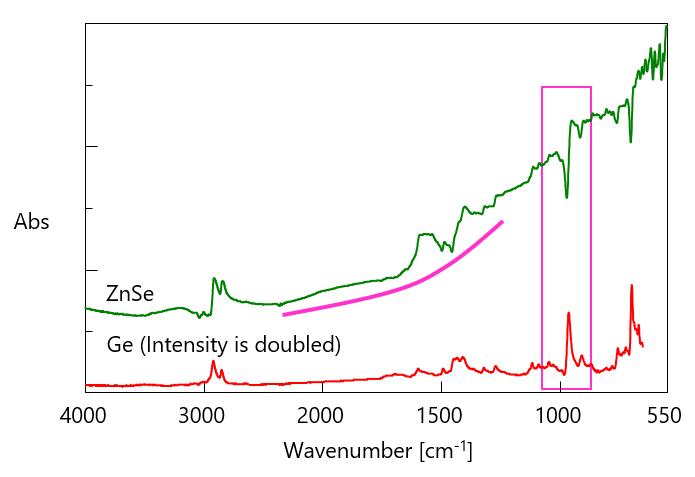
Spectra measured with Ge ATR has a flat baseline for a sample with a high refractive index and can be measured without distortion.
Keywords
280AT0003-E, ATR, prism, diamond, Ge, ZnSe, refractive index
References
About the Author
Dr. Carlos Morillo received his Post Doc at Advanced Industrial Science & Technology in Fukuoka and was a Research Scientist at Kyushu University in Japan where he lived for several years. Carlos received his Doctor of Engineering from Kyushu University and his Masters and BS from Simon Bolivar University in Caracas Venezuela. He is an Applications Scientist at JASCO.

